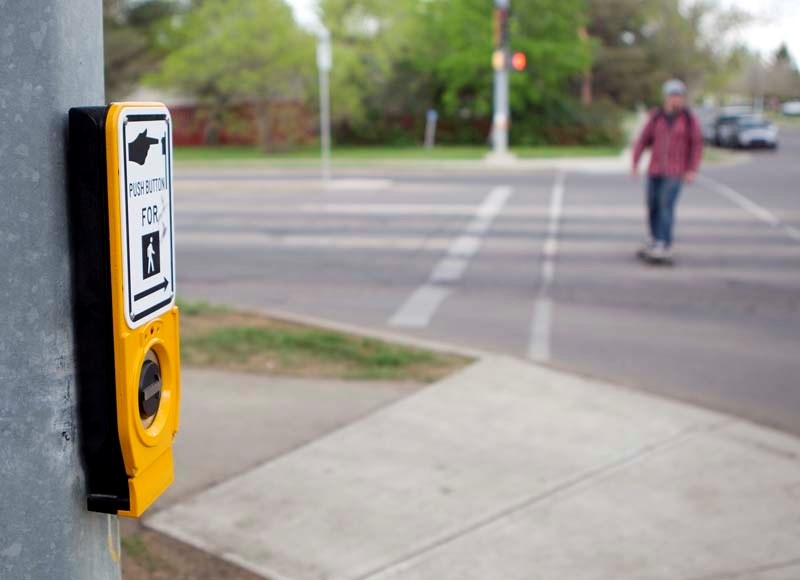Select intersections in St. Albert now feature pedestrian signals that have the ability to speak. They don't say much, only "wait" after you push the arrow-shaped button, indicating you'd like to cross.
Select intersections in St. Albert now feature pedestrian signals that have the ability to speak.
They don't say much, only "wait" after you push the arrow-shaped button, indicating you'd like to cross. But these signals are the new standard when it comes to making sure intersections are safe to use for the visually impaired.
"The added benefit, even for any pedestrian on the streets, is there's an indication for the direction and there's direct sounds that can be used for anyone crossing the road," said Dean Schick, St. Albert transportation systems supervisor. "Combine them with the countdowns for the non-visually impaired, it's improving overall communication to pedestrians on when they can cross and how much time they have to cross."
The city started installing the new accessible pedestrian signals last year, when they installed four. This year they have already installed the eight they had planned and will set up another six next year for a total of 18 citywide. Most are located at St. Albert's busier intersections, such as St. Albert Trail and Hebert Road or Boudreau Road and Bellerose Drive.
"The priority for the installation of the equipment has been based on communication with residents, so user need," said Schick. "It's also an upgrade of our audible crossings."
The new signals come at a cost of approximately $4,000 per intersection for the equipment and installation, Schick said.
The tone to cross is still the same as at other intersections – a piercing "whoop" noise that signals it is safe. But the buttons look different than at previous intersections, with the button to use the signal replaced by an actual arrow, indicating what direction the pedestrian will cross when they push the button.
A recorded voice quickly says "wait" and a tone sounds repeatedly, indicating it is not yet time to cross.
There's nothing wrong with the old audible crossings, Schick said, but these new signals are the new accepted standard when it comes to ensuring intersections are as safe as possible for the visually impaired.
"It's the additional information," said Schick. "The audible signals were recognized back in their time, so they should be upgraded to the technology available."
Unlike countdown timers, which are primarily installed for pedestrians but also help improve safety by giving motorists a visual cue, there is no benefit to drivers from these new signals, Schick said.
"The biggest message for us is the overall goal here to provide improved quality of life through increased safety," said Schick.
Editor's note: The original version of this story stated that the new signals cost $4,000 each. The story has been updated to reflect the cost of $4,000 per intersection. The Gazette apologizes for the error.
